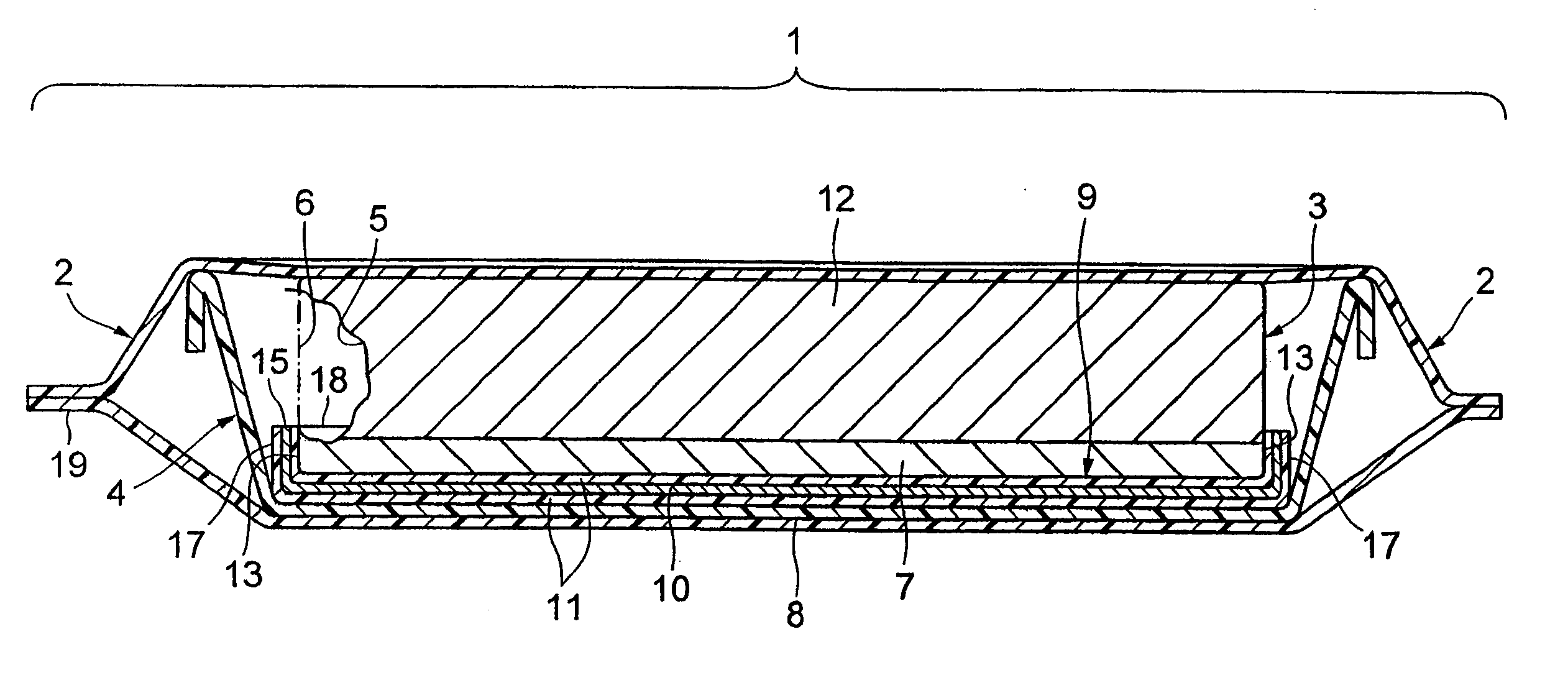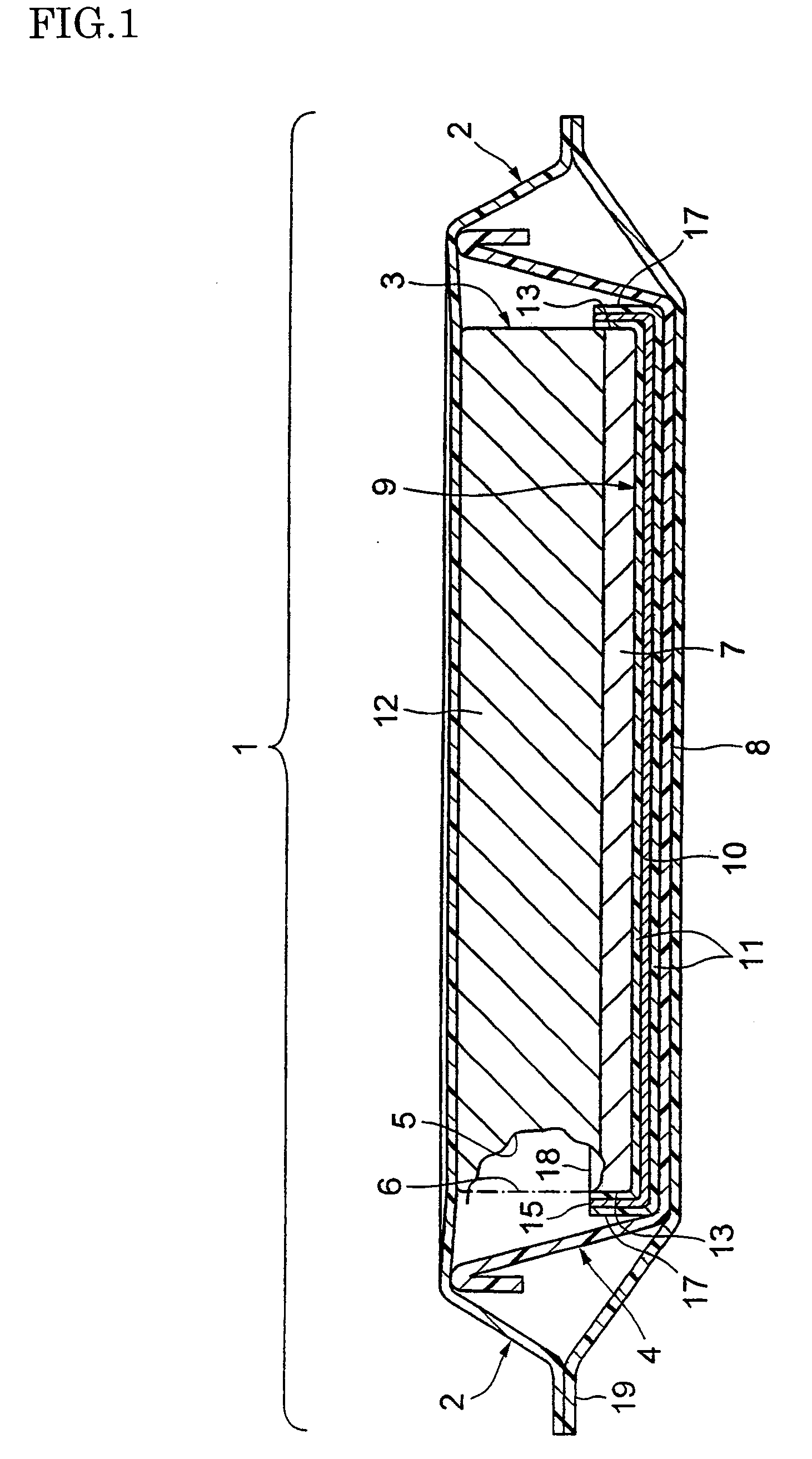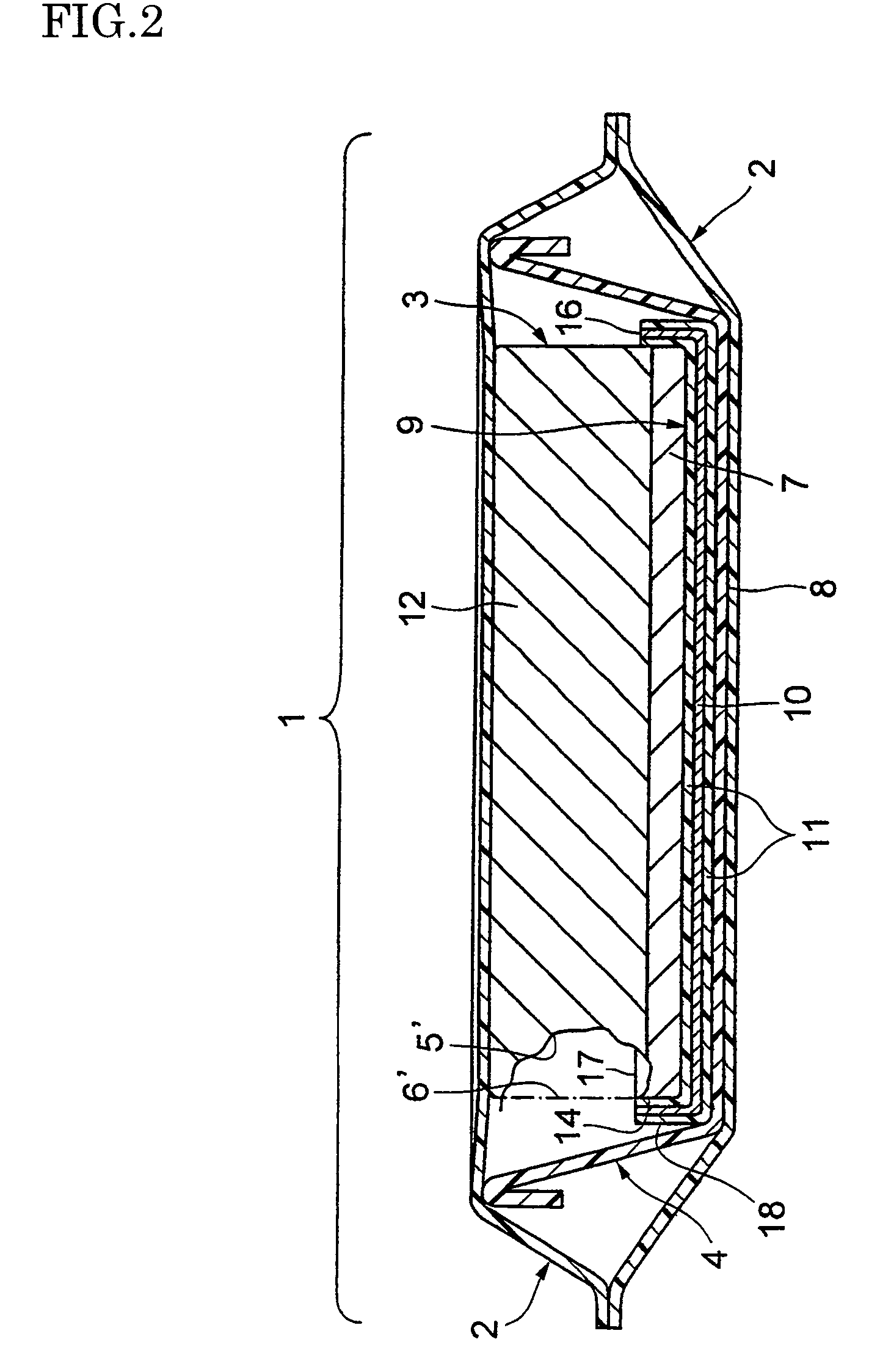Deaerated packaged frozen sushi, process for producing the same and method of cooking
a frozen sushi and packaged technology, applied in the field of frozen sushi products, can solve the problems of insufficient use of microwave thawing, inability to achieve the effect of thawing in a relatively short time, and preventing from being heated
- Summary
- Abstract
- Description
- Claims
- Application Information
AI Technical Summary
Benefits of technology
Problems solved by technology
Method used
Image
Examples
example 1
[0073]1400 ml of seasoned vinegar (sushi vinegar) was added in 13 kg of cooked rice, followed by mixing to uniformly vinegar the rice. Then, the thus vinegared rice was cooled to 50° C. Using 240 g of the rice vinegared and cooled to 50° C. and slices of mackerel as a sushi material, each of mackerel-topped boxed sushi products of 5.5 cm in width, 18 cm in length and 3 cm in thickness (L size) and 320 g in weight was prepared. The mackerel-topped boxed sushi product was taken out of a sushi box for making a boxed sushi product and placed with its slices of mackerel as a sushi material down in a plastic box on the bottom of which a laminated aluminum foil is placed. In this Example, the laminated aluminum foil used was composed of a polyethylene terephthalate (PET) layer having a thickness of 12 μm as a top layer, and thereunder, an aluminum layer having a thickness of 9 μm, and thereunder, a polypropylene layer as used in a retort pouch and having a thickness of 70 μm, and the lamin...
example 2
[0077]The mackerel-topped boxed sushi product (L size) prepared in Example 1 was used. As in Example 1, the mackerel-topped boxed sushi product (L size) was taken out of a sushi box for making a boxed sushi product and placed with its slices of mackerel as a sushi material down in a plastic box on the bottom of which a laminated aluminum foil is placed. In this Example, the laminated aluminum foil used was composed of a polyethylene terephthalate (PET) layer having a thickness of 12 μm as a top layer, and thereunder, an aluminum layer having a thickness of 9 μm, and thereunder, a polypropylene layer as used in a retort pouch and having a thickness of 70 μm, and the laminated aluminum foil measured 6.5 cm in width and 19.5 cm in length. The box used in this Example had a reversed truncated rectangular pyramidal shape, i.e., reversed kamaboko-like shape, and it had inner dimensions of 6.2 cm in width and 18.2 cm in length in the bottom, and 6.2 cm in width and 19.2 cm in length in the...
PUM
 Login to View More
Login to View More Abstract
Description
Claims
Application Information
 Login to View More
Login to View More - R&D
- Intellectual Property
- Life Sciences
- Materials
- Tech Scout
- Unparalleled Data Quality
- Higher Quality Content
- 60% Fewer Hallucinations
Browse by: Latest US Patents, China's latest patents, Technical Efficacy Thesaurus, Application Domain, Technology Topic, Popular Technical Reports.
© 2025 PatSnap. All rights reserved.Legal|Privacy policy|Modern Slavery Act Transparency Statement|Sitemap|About US| Contact US: help@patsnap.com



